Malcolm Harris at The Nation:
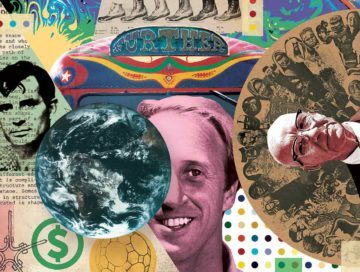 Stewart Brand is not a scientist. He’s not an artist, an engineer, or a programmer. Nor is he much of a writer or editor, though as the creator of the Whole Earth Catalog, that’s what he’s best known for. Brand, 83, is a huckster—one of the great hucksters in a time and place full of them. Over the course of his long life, Brand’s salesmanship has been so outstanding that scholars of the American 20th century have secured his place as a historical figure, picking out the blond son of Stanford from among his peers and seating him with inventors, activists, and politicians at the table of men to be remembered. But remembered for what, exactly?
Stewart Brand is not a scientist. He’s not an artist, an engineer, or a programmer. Nor is he much of a writer or editor, though as the creator of the Whole Earth Catalog, that’s what he’s best known for. Brand, 83, is a huckster—one of the great hucksters in a time and place full of them. Over the course of his long life, Brand’s salesmanship has been so outstanding that scholars of the American 20th century have secured his place as a historical figure, picking out the blond son of Stanford from among his peers and seating him with inventors, activists, and politicians at the table of men to be remembered. But remembered for what, exactly?
Whole Earth: The Many Lives of Stewart Brand is the first full biographical consideration of a man who has already provided useful fodder for writers seeking to characterize the various social and intellectual movements that came out of California in the final third of the 20th century.
more here.

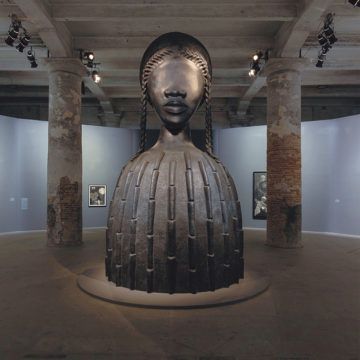 PAINTED IN THE 1950S on the walls of her sons’ bedroom and later collected in a children’s book called The Milk of Dreams, Leonora Carrington’s wicked fairy tales inspired the title and tenor of the Fifty-Ninth Venice Biennale. Filled with disobedient children, deviant friendships, orphaned monsters, evil crones, sentient meat, hungry furniture, misplaced heads, scatological warfare, and pharmacological magic, Carrington’s stories struck curator Cecilia Alemani for their construction of what she describes as “a world free of hierarchies, where everyone can become something else.” Alemani endeavored to create something like this world in her beautiful and perturbing exhibition, and to a great degree she has succeeded.
PAINTED IN THE 1950S on the walls of her sons’ bedroom and later collected in a children’s book called The Milk of Dreams, Leonora Carrington’s wicked fairy tales inspired the title and tenor of the Fifty-Ninth Venice Biennale. Filled with disobedient children, deviant friendships, orphaned monsters, evil crones, sentient meat, hungry furniture, misplaced heads, scatological warfare, and pharmacological magic, Carrington’s stories struck curator Cecilia Alemani for their construction of what she describes as “a world free of hierarchies, where everyone can become something else.” Alemani endeavored to create something like this world in her beautiful and perturbing exhibition, and to a great degree she has succeeded.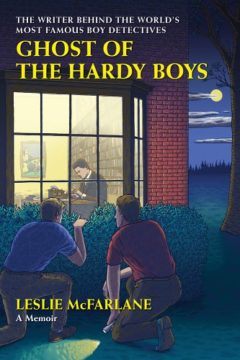 This example of calmness in the face of disaster didn’t really help. It was all very well for Dave Fearless to meet catastrophe with aplomb. He could count on Bob Vilett and Captain Broadbeam to haul him to the surface, while Pat Stoodles lent encouragement by bellowing “Heave-ho, bejabers!” I couldn’t count on anyone—except, perhaps, Edward Stratemeyer.
This example of calmness in the face of disaster didn’t really help. It was all very well for Dave Fearless to meet catastrophe with aplomb. He could count on Bob Vilett and Captain Broadbeam to haul him to the surface, while Pat Stoodles lent encouragement by bellowing “Heave-ho, bejabers!” I couldn’t count on anyone—except, perhaps, Edward Stratemeyer. The COVID-19 pandemic was foreseen. Experts everywhere had long predicted a global viral outbreak and called for action to prevent it. World leaders, on the whole, did little. Now, with COVID-19 still raging, Bill Gates has produced a manifesto on what must be done to prevent the next pandemic. Written in accessible prose that even a busy world leader could not fail to grasp, the global-health philanthropist offers some life-saving ideas that are ambitious and achievable — if political leaders act.
The COVID-19 pandemic was foreseen. Experts everywhere had long predicted a global viral outbreak and called for action to prevent it. World leaders, on the whole, did little. Now, with COVID-19 still raging, Bill Gates has produced a manifesto on what must be done to prevent the next pandemic. Written in accessible prose that even a busy world leader could not fail to grasp, the global-health philanthropist offers some life-saving ideas that are ambitious and achievable — if political leaders act. A student once asked—after a classroom discussion of how 19th-century westward expansion connected to the ongoing injustices of American military bases in the Pacific—what she was supposed to do with this knowledge. Her question was as genuine as it was perceptive. It also felt like I had, again, failed.
A student once asked—after a classroom discussion of how 19th-century westward expansion connected to the ongoing injustices of American military bases in the Pacific—what she was supposed to do with this knowledge. Her question was as genuine as it was perceptive. It also felt like I had, again, failed.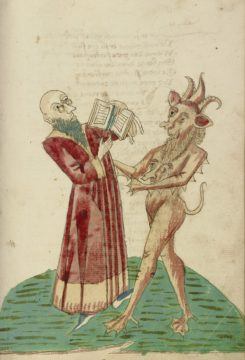 But my interest, I clarified, while probably morbid, is not merely personal. It stems from a keenly felt, soul-sucking disillusionment. By accident of birth I am a modern, which means I will never know a charmed world. A world of consecrated hosts and faerie-haunted forests, where the line between individual agency and impersonal force is blurred at best. Gone is the idea of a porous human self, vulnerable to immaterial forces beyond his control. Significance has retreated from the outer world into our respective skulls, where, over time, it has stiffened, bloated, and finally decomposed into nothing, into dust.
But my interest, I clarified, while probably morbid, is not merely personal. It stems from a keenly felt, soul-sucking disillusionment. By accident of birth I am a modern, which means I will never know a charmed world. A world of consecrated hosts and faerie-haunted forests, where the line between individual agency and impersonal force is blurred at best. Gone is the idea of a porous human self, vulnerable to immaterial forces beyond his control. Significance has retreated from the outer world into our respective skulls, where, over time, it has stiffened, bloated, and finally decomposed into nothing, into dust.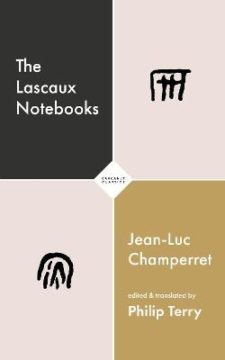 Who are we? Where do we come from? Who or what were the people, the land, the gods who made us? These questions have perplexed and haunted us ever since human beings evolved.
Who are we? Where do we come from? Who or what were the people, the land, the gods who made us? These questions have perplexed and haunted us ever since human beings evolved. On Salisbury Plain in Wiltshire, England, rests an extraordinary monument that has puzzled and inspired people for millennia: the circular set of rocks known as Stonehenge. The iconic scene, so precisely designed and constructed, provokes a litany of questions: What motivated the Neolithic people to create such a thing? Where did the huge, 20-ton stones come from? How was it built?
On Salisbury Plain in Wiltshire, England, rests an extraordinary monument that has puzzled and inspired people for millennia: the circular set of rocks known as Stonehenge. The iconic scene, so precisely designed and constructed, provokes a litany of questions: What motivated the Neolithic people to create such a thing? Where did the huge, 20-ton stones come from? How was it built?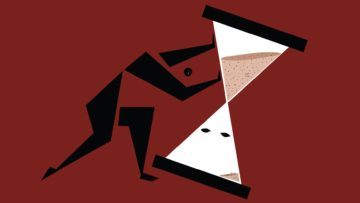 Juneteenth — a portmanteau of “June” and “nineteenth” — became a federal holiday just last year, but Black Americans, particularly Black Texans, have been celebrating it for generations. The first Juneteenth festivities took place in the late 19th century in Texas’s Emancipation Park, and combined
Juneteenth — a portmanteau of “June” and “nineteenth” — became a federal holiday just last year, but Black Americans, particularly Black Texans, have been celebrating it for generations. The first Juneteenth festivities took place in the late 19th century in Texas’s Emancipation Park, and combined  They are the ultimate “how to draw” books for a young child, created by a doting dad who just happened to be one of the greatest artists of the 20th century. The granddaughter of
They are the ultimate “how to draw” books for a young child, created by a doting dad who just happened to be one of the greatest artists of the 20th century. The granddaughter of 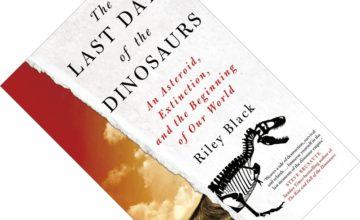 The day an asteroid slammed into the Yucatán Peninsula some 66 million years ago is a strong contender for “the worst day in history”. The K–Pg extinction ended the long evolutionary success story of the dinosaurs and a host of other creatures, and has lodged itself firmly in our collective imagination. But what happened next? The fact that a primate is tapping away at a keyboard writing this review gives you part of the answer. The rise of mammals was not a given, though, and the details have been hard to get by. Here, science writer Riley Black examines and imagines the aftermath of the extinction at various times post-impact. The Last Days of the Dinosaurs ends up being a fine piece of narrative non-fiction with thoughtful observations on the role of evolution in ecosystem recovery.
The day an asteroid slammed into the Yucatán Peninsula some 66 million years ago is a strong contender for “the worst day in history”. The K–Pg extinction ended the long evolutionary success story of the dinosaurs and a host of other creatures, and has lodged itself firmly in our collective imagination. But what happened next? The fact that a primate is tapping away at a keyboard writing this review gives you part of the answer. The rise of mammals was not a given, though, and the details have been hard to get by. Here, science writer Riley Black examines and imagines the aftermath of the extinction at various times post-impact. The Last Days of the Dinosaurs ends up being a fine piece of narrative non-fiction with thoughtful observations on the role of evolution in ecosystem recovery.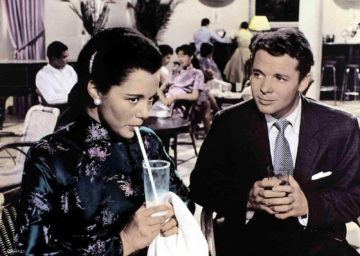 WHEN THE FILM VERSION
WHEN THE FILM VERSION
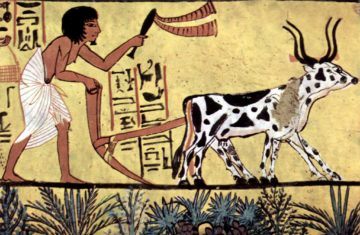 “Crops were planted on 1.371 billion hectares (3.387 billion acres) globally in 1961. That rose to 1.533 billion hectares (3.788 billion acres) in 2009. Ausubel and his coauthors project a return to 1.385 billion hectares (3.422 billion acres) in 2060, thus restoring at least 146 million hectares (360 million acres) to nature. This is an area two and a half times that of France, or the size of 10 Iowas. Although cropland has continued to expand slowly since 2009, the UN Food and Agriculture Organization reports that land devoted to agriculture (including pastures) peaked in 2000 at 4915 billion hectares (12.15 billion acres) and had fallen to 4.828 billion hectares (1193 bill on acres) by 2017. The human withdrawal from the landscape is the likely prelude to a vast ecological restoration over the course of this century.
“Crops were planted on 1.371 billion hectares (3.387 billion acres) globally in 1961. That rose to 1.533 billion hectares (3.788 billion acres) in 2009. Ausubel and his coauthors project a return to 1.385 billion hectares (3.422 billion acres) in 2060, thus restoring at least 146 million hectares (360 million acres) to nature. This is an area two and a half times that of France, or the size of 10 Iowas. Although cropland has continued to expand slowly since 2009, the UN Food and Agriculture Organization reports that land devoted to agriculture (including pastures) peaked in 2000 at 4915 billion hectares (12.15 billion acres) and had fallen to 4.828 billion hectares (1193 bill on acres) by 2017. The human withdrawal from the landscape is the likely prelude to a vast ecological restoration over the course of this century. Vladimir Nabokov’s 1955 novel Lolita still attracts plenty of analysis, admiration and disgust, in the classroom and beyond. But despite the pedigree of the beloved film-maker Stanley Kubrick, the first film adaptation of Lolita – released 60 years ago this week – is arguably more of a curio these days, forced to excise or elide some of the book’s thorniest elements for the sake of being allowed to exist at all.
Vladimir Nabokov’s 1955 novel Lolita still attracts plenty of analysis, admiration and disgust, in the classroom and beyond. But despite the pedigree of the beloved film-maker Stanley Kubrick, the first film adaptation of Lolita – released 60 years ago this week – is arguably more of a curio these days, forced to excise or elide some of the book’s thorniest elements for the sake of being allowed to exist at all.